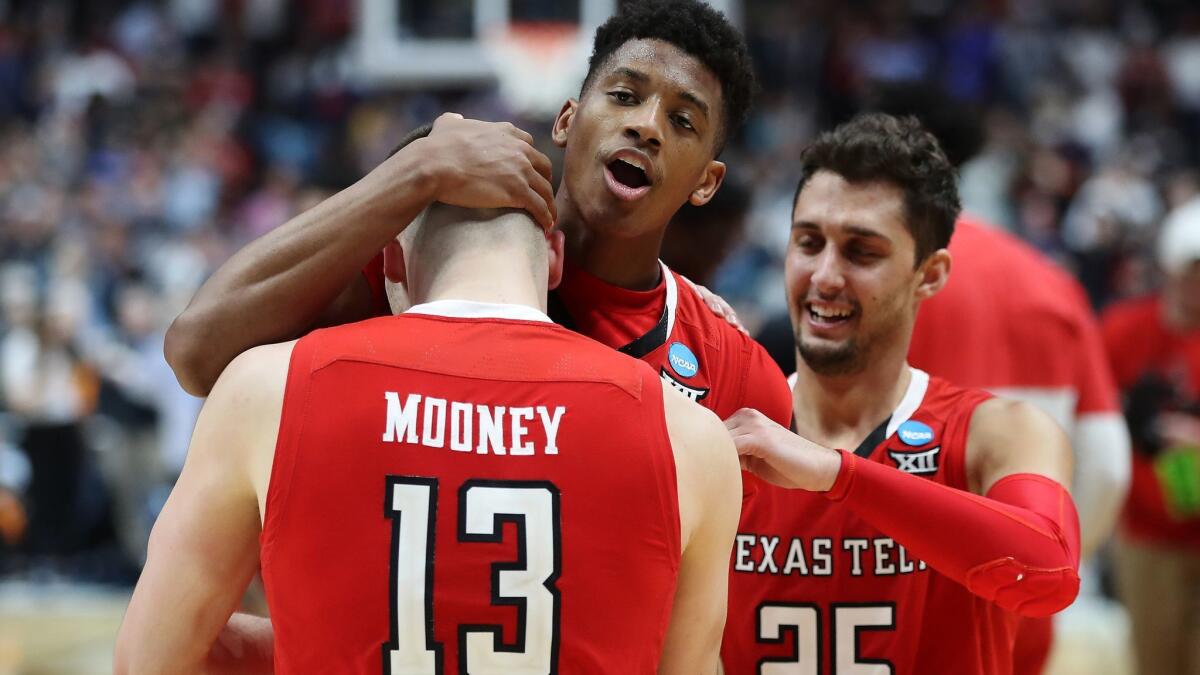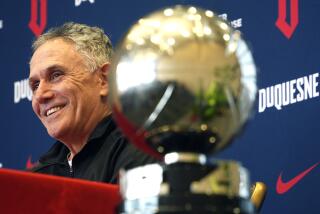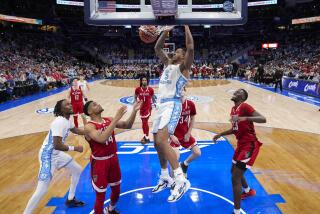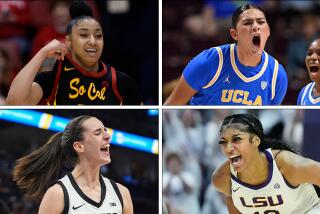This NCAA Final Four is a bunch of keepers: There are no one-and-done players left

The most competitive set of Elite Eight games in recent memory ended in fitting fashion, with a fifth-year senior former walk-on swishing a game-winning three, followed by a one-and-done freshman missing his three-point attempt and then bricking the first of what could have been two game-tying free throws.
This NCAA tournament was supposed to be about the RJ Barretts — more specifically, his sensational Duke teammate Zion Williamson, who passed up his chance at taking the big shot in favor of Barrett. Mike Krzyzewski’s Blue Devils, the No. 1 overall seed and the betting favorites, are not moving on to the Final Four, and the reason is not because Coach K did not get his four NBA-ready freshmen to play together on the biggest stage of their lives.
It’s because Michigan State’s Kenny Goins found the composure to knock down an open three when it counted most, capping a weekend meant for college basketball thrill-seekers, not observers wearing their NBA scouting hats and compiling their Mock Draft 3.0.
Did anyone else have to remind themselves to breathe a dozen different times Saturday and Sunday? Even if you didn’t have a dog in the fight, Gonzaga-Texas Tech, Virginia-Purdue, Kentucky-Auburn and Duke-Michigan State required your undivided attention and the space to pace.
West Region No. 3 seed Texas Tech came out of Anaheim with a defensive mentality derived from a head coach in Chris Beard who was coaching at a place called Angelo State as of 2015. South No. 1 seed Virginia needed an unthinkable buzzer-beater to force overtime and put Purdue’s Carsen Edwards, who scored 42 points, out of the tournament. The calculating Cavaliers aren’t known for great theater, but even they couldn’t avoid high drama this weekend.
Sunday, Midwest No. 5 seed Auburn, like Texas Tech, clinched its first Final Four berth. The Tigers beat longtime SEC bully Kentucky in overtime for their third straight upset of one of the sport’s bluebloods after sending home Kansas and North Carolina.
And finally, the East No. 2 seed Spartans finished what the Red Raiders, Cavaliers and Tigers started, completing a lineup for Minneapolis that does not include one freshman expected to be an NBA pick this June.
Some may say it is bad for college basketball that Duke and Kentucky did not advance, setting up the potential of a titanic Monday night final. The TV ratings are likely to suffer, sure.
But with the NBA expected to lower the league’s age minimum back to 18 by 2022, ending the one-and-done era that began in 2006, college basketball’s veteran-led teams stepped forward this weekend at the right time to show that the sport can be vibrant even without the next Williamson or Barrett having to go through the charade of attending tutoring sessions to pass a general studies class for the chance to have their talents seen by millions.
That’s the dance within the Big Dance, and it’s one that has brought some needed attention to a sport that feels more niche when the calendar doesn’t say March.
In January and February, even college basketball fans are more likely to watch when a transcendent talent like Williamson is playing a conference roadie in Blacksburg, Va. More people were watching Duke-North Carolina this year, certainly, when Williamson broke through his Nike shoe and injured his knee, shining an intense spotlight on the NCAA’s broken “amateur” model.
But in March, when the whole country tunes in, the sport hasn’t been dominated by teams that rely on one-and-done players, and part of that is because of the randomness of this marvelous 68-team event in crowning its champion.
It is telling that only two teams that loaded up on future NBA freshmen had their “One Shining Moment” — Kentucky in 2012 and Duke in 2015.
When John Calipari matched his recruiting wits with the Kentucky brand in 2009, there was a rightfully placed fear that the Wildcats were going to run circles around NCAA investigators and rack up national titles. His best team was probably the 2015 crew that was on the way to matching Indiana’s undefeated season of 1976 before losing to an experienced bunch of Wisconsin Badgers in the national semifinal.
By that time, Coach K had joined in on the one-and-done fun, and Duke clipped Wisconsin in the final behind three freshmen who were first-round picks. From there, Coach K usurped Calipari as the top choice for players who needed a quick stop between high school and the NBA draft green room. This year, Duke might as well have been called the “Nike Blue Devil Elite 19 and Under Team.”
Coach K and his glorified AAU squad made for juicy story lines and a ready-made national villain, but, as this weekend proved, Duke did not make the sport.
Still, college basketball has major issues to address. One downside of Duke’s early exit is that Krzyzewski is ready to talk about them, and four teams with feel-good stories will keep things light in Minneapolis.
Coach K had a lot to say Saturday about the end of one-and-done, calling out the NCAA for being unprepared for it. He said the sport’s governing body has to take it seriously — soon.
“The kids deserve it,” he said. “And in this time the definition of amateurism … it’s outdated. We need a new model. And with all these things that are changing, it cries out for coordination of creating this new model. If we don’t do it, our game’s going to suffer.”
Sign up for our daily sports newsletter »
Krzyzewski brought up the NBA’s developmental G-League, which would theoretically offer 18-year-olds a chance to make a respectable salary playing the game they love if they are unable to make an NBA roster but don’t want to go to school.
“Is the G-League advanced?” Krzyzewski wondered of the future. “Do they have a TV contract? Look, if it gets to that — if a kid coming out of high school does not go to college and get marketed — I would think the NBA would want to market. So is there another form of TV there that the NCAA is then competing against?”
Krzyzewski did everything but come out and say it: If the NCAA wants to have the best basketball product long term — one as marketable as what the players delivered this weekend — it will have to offer player compensation well past a college education and a living stipend to remain an attractive option.
The NCAA could point to the level of play in this Elite Eight and the composition of this Final Four and conclude the status quo works. They could say that nobody is tuning in for the Fort Wayne Mad Ants and the Delaware Blue Coats over any March Madness game, and on that, they would be right.
The status quo gave fans a weekend to remember. The Final Four, even with Zion, would have struggled to top it.
Twitter: @BradyMcCollough
More to Read
Go beyond the scoreboard
Get the latest on L.A.'s teams in the daily Sports Report newsletter.
You may occasionally receive promotional content from the Los Angeles Times.











